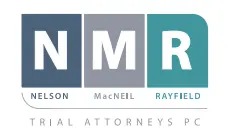Anyone who watches television is aware of all dramas and documentaries out there dealing with the investigation and prosecution of criminal activity. Many of these shows focus on the importance of forensic techniques to gather and analyze evidence.
A common theme is the prosecutor’s reluctance to proceed until adequate evidence exists connecting the defendant to the victim and the crime. This makes sense because the prosecuting attorney knows that the government will have the burden of proof at trial.
But what about civil cases? What role does evidence play – especially medical evidence? We’ll discuss that issue in this article.
The Plaintiff Has the Burden of Proof
In civil cases, such as personal injury claims, the plaintiff has the burden of proof. While the government must prove a criminal case beyond a reasonable doubt, it’s the plaintiff who must prove a civil case by a preponderance of the evidence. That means the plaintiff must prove the elements of his or her claim by the greater weight of the evidence.
In other words, the plaintiff need not prove a case beyond all reasonable doubt, as in a criminal case, but rather must show with evidence that the claim is more than 50% likely to be true. Evidence can include documents, witness testimony, admissions, stipulations, photographs and other items that support a claim.
Where Does Medical Evidence Come In?
Medical evidence is commonly used in two important ways in a personal injury case – to prove causation and damages. Medical evidence often includes the testimony of a physician or other medical care provider. However, it can also include medical notes, x-rays, MRIs, CT scans and other evidence that relates to diagnosis and treatment.
Causation – Medical evidence may be necessary to demonstrate that a plaintiff’s injuries were caused by a particular accident. This is called causation, and depending on the circumstances, it can be more obvious in some cases than in others.
For example, consider a car that negligently runs over a healthy young woman’s foot. She has never been injured before. She now has multiple crushed bones, torn ligaments, and serious nerve damage. Medical evidence can easily connect these injuries to the negligent driver’s actions.
However, some cases are more complicated. Consider a middle-aged man whose car is struck from behind, causing him to suffer whiplash. The gentleman is clearly hurt, but it’s not his first accident. Fifteen years ago, he had a work-related accident while lifting heavy objects and injured his back. Seven years ago he had another car accident, which also injured his back.
When evaluating the claim, insurance company adjusters and lawyers will likely claim that all of the present injuries were caused by the old accidents, thereby hoping to avoid paying full compensation to this gentleman in his current case. It will be up to the plaintiff to obtain medical evidence proving the extent to which the current car accident caused his back injuries.
Damages – Medical evidence is crucial for helping a plaintiff and his or her attorney prove the extent of the injuries incurred and the suffering the person has endured. For example, an x-ray showing a broken bone or an MRI showing a damaged disc demonstrates that an accident had a serious consequence.
Moreover, insurance adjusters (when attempting settlement) and juries (when a trial is necessary) consider the amount of medical care, the type of medical care, and the cost of medical care when determining the appropriate damages.
For example, consider a man who is injured in a crash with another automobile or semi-truck. He is in pain at the time of the accident, so he accepts the offer to be transported to the emergency room and examined. He is referred to an orthopedist who finds injuries and treats him.
The man goes to all of his medical appointments and has a good recovery, although there are some residual effects and pain. He has a lot of medical bills, but keeping good health was worth incurring the cost of the needed medical treatment. With all of the man’s medical evidence, his lawyer easily proves the accident caused the injury; that medical treatment was necessary and proper; and that the amount of the medical treatment demonstrates the severity of the injury. The man receives a fair settlement from the insurance company.
Now consider a young woman. She has a car crash caused by a negligent driver. She feels bad, but she’s tough and denies the offer to be checked out at the emergency room. She thinks she will be fine in a few days.
She’s not. A few months later, she finally goes to the doctor who discovers some medical problems. Unfortunately, she skips lots of her follow-up visits because she doesn’t want to miss work and wants to be frugal. She doesn’t have the greatest recovery.
In her case, the insurance company makes a much lower offer. The adjuster claims that she wasn’t really hurt very badly because she didn’t go to the hospital; waited a long time to seek treatment; and missed many medical appointments. While she may still ultimately recover from her injuries, she has unwittingly provided the insurance company with evidence to use against her.
When in Doubt, Get Checked Out
In the end, there’s nothing more important than protecting one’s health. And certainly no one should seek unneeded medical treatment. However, most of us are not doctors.
Therefore, when injured in an accident, it’s important to be checked out to make sure everything is okay. If there are problems, make sure you follow the advice of your doctor.
Call with Questions
If you have injuries from an accident, you probably have questions on how to proceed. Please call us and we will be happy to answer them. At Nelson MacNeil Rayfield, our experienced personal injury lawyers take seriously our role in holding wrongdoers responsible for their actions in the hopes that fewer people will violate society’s standards in the future.
